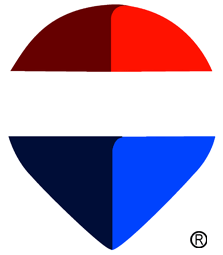Identifying Weeds in Your Garden
Not sure how to tell the good from the bad when identifying weeds in your garden? Is it a weed or a flower? The truth is we all face the dilemma of identifying weeds in the garden. When plants start sprouting in spring, all those tiny leaves seem to look the same. Here are some common weeds in North America. If you can learn to recognize these, you will be well on your way toward eliminating most of the unwelcome visitors in your yard.

Teasel is a thistle look-alike brought to North America in the 1700s. It was used for processing wool. It’s prickly stems and leaves make it undesirable to both wildlife and agriculture. So, if you find it in your backyard, you will want to eliminate it.

Buckthorn, garlic mustard and purple loosestrife were once prized landscape plants. However, they now crowd out native plants and disrupt natural ecosystems. Try to get rid of them. Their presence reduces food sources and habitat for native birds, butterflies, beneficial insects and wildlife.

Crabgrass needs to be pulled before the plants set seed. Mow lawns high to help lawn grass shade out the crabgrass. Mulch to help prevent seeds from sprouting.

Ragweed is a plant that hayfever sufferers will want to watch out for. You can usually find this pesky weed hiding behind its colorful neighbor, goldenrod. Be sure to mow it down or pull it before it has a chance to release its allergenic pollen.

Garlic mustard was brought here for medicinal purposes and food, but it has become one of the worst forest invaders. Pull and properly dispose of plants just before they flower.

Creeping Charlie (ground ivy) is easy to identify by its round, scalloped leaves, which are fragrant when crushed. This shade-tolerant plant with purple spring flowers can quickly take over a lawn or garden bed. To get rid of it in the lawn, try a chelated iron-based weedkiller. In the garden, pull it out and mulch.

Thistles quickly infiltrate and take over the garden. Birds and butterflies love thistle but gardeners and farmers hate it. To control the spread, try removing before they flower and set seed.

Poison ivy is the ultimate weed to avoid. “Leaves of three, let it be” is old but wise advice. All parts of poison ivy can cause an allergic reaction. Wear protective clothing and wash thoroughly after touching.
Weeds to Reconsider
Though you may still want to manage them in the landscape, you might find that these plants, typically considered weeds, actually have value.
Clover: Many lawn enthusiasts consider it a weed, but it’s an important source of nectar for bees and wildlife. Some people grow clover lawns as a more eco-friendly alternative to traditional grass.
Common purslane: This is a summer annual. It thrives in hot, dry conditions and is a substitute for spinach. Pull it before it sets seed to keep it under control, but throw a little on your salad, too.
Lamb’s-quarters: It’s moving off many weed lists and onto gourmet restaurant menus. Do a little reading before you eat it because too much can make you sick.
Chickweed: This is another one that can quickly take over a garden, but it adds zing to a salad or sandwich.
Weeds you Want
They might have “weed” in their names, but don’t be fooled. You actually want these garden favorites in your backyard.
- Butterfly weed or milkweed
- Sneezeweed
- Joe Pye weed
- Ironweed
- Rosinweed
- Jewelweed
- Soapweed
- Staggerweed




Leave a Reply